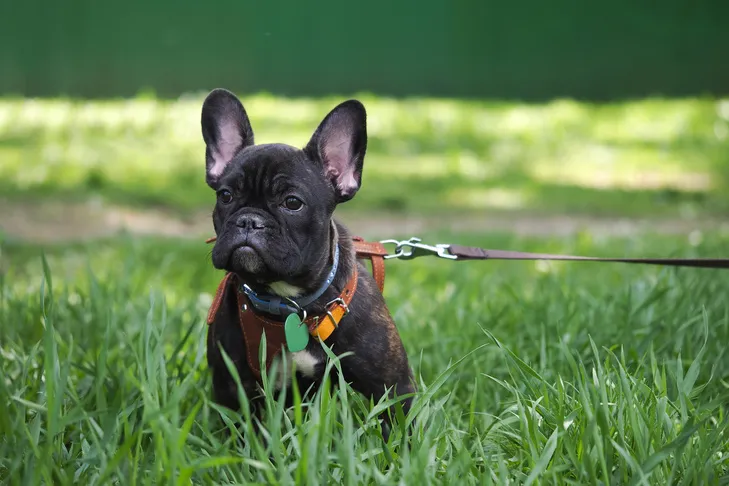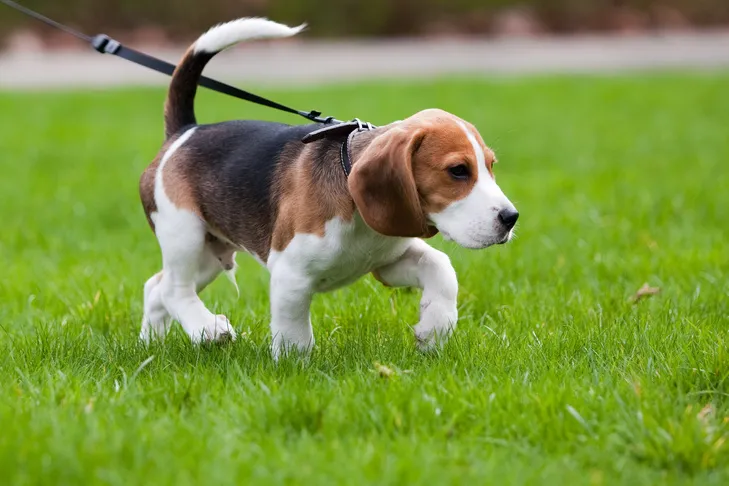Taking your puppy for regular walks is crucial for their physical exercise and vital for proper socialization. However, puppies aren’t born knowing how to navigate the world on a leash. While some might naturally trot beside you and others pull eagerly, some puppies completely refuse to budge once the leash is clipped on. This common behavior leaves many owners wondering why their furry friend acts as if the leash is a stop sign. The primary reason is often fear—either of the unfamiliar collar and leash itself, or of the overwhelming stimuli in the great outdoors. Understanding these fears is the first step in learning how to get a puppy to walk outside with confidence and joy.
Teach Your Puppy to Love the Leash and Collar
For many puppies, the simple act of clipping on a leash can be enough to trigger a complete shutdown. A leash represents a form of restraint, limiting their freedom to explore or escape from anything perceived as frightening. This feeling can be quite intimidating, turning what should be an exciting prelude to a walk into a scary experience. Similarly, a collar can feel strange and uncomfortable. If the collar has ever been used to grab or pull the puppy, they may associate it with negative consequences. The goal is to help your puppy associate their collar and leash with positive experiences, making them feel secure and comfortable while wearing them.
Ideally, your puppy’s breeder would have introduced them to a collar and leash early on. If not, it becomes your responsibility to build this positive association. Begin by letting your puppy wear the collar and leash for very short periods inside the house. During this time, offer plenty of praise, engage in playful activities, and reward them with delicious treats. You can also play a “Gotcha” game, where you gently grab their collar for a moment before giving a favorite treat. Soon, your puppy will begin to see the collar and leash as signals for wonderful things to come, setting the stage for how to get my puppy to walk on a leash more easily.
Now, you’re ready to introduce walking on the leash. Still inside the house, use treats to lure your puppy toward you while they are clipped to the leash. Shower them with praise and rewards when they respond and move closer. Gradually, start taking a few steps with your puppy. If they hesitate, continue to encourage them with treats. Once your puppy is comfortable walking with you indoors, progress to your backyard, and then eventually to the sidewalk. Keep these training sessions short, fun, and always end them on a positive note with ample praise and rewards.
 Boy walking a King Charles Cavalier Spaniel in a field.
Boy walking a King Charles Cavalier Spaniel in a field.
Socialize Your Puppy to the Great Outdoors
When you transition your leash training outside, remember that the “great outdoors” can be an overwhelming sensory experience for many puppies. The sheer volume of new sights, sounds, and smells can be frightening and cause anxiety. Proper and gradual socialization is key to helping your puppy overcome this anxiety and build crucial confidence, ensuring they understand how to get puppy to walk with leash in various environments.
Introduce your puppy to a diverse range of people—different ages, sizes, and ethnicities. Also, consider how people might appear different to a dog, such as those wearing hats, glasses, or using wheelchairs. It’s also important to expose your puppy to many different dogs and environments. However, it’s vital not to force any interactions. Allow your puppy to initiate contact at their own pace, always keeping these new experiences positive. Pair new outdoor encounters with play, praise, and treats. This approach helps your puppy become comfortable with the world around them, viewing other people and dogs as potential friends rather than threats.
 French bulldog puppy in a harness sitting in tall green grass on a leash for a walk.
French bulldog puppy in a harness sitting in tall green grass on a leash for a walk.
Making Walks Enjoyable for Your Puppy
Your puppy’s initial outdoor walks should focus entirely on fun and exploration. Don’t worry about teaching them to “heel” or walk perfectly at your side during these early stages. Encourage them to sniff, investigate, and simply enjoy being outside. You can give your dog the best walk possible by avoiding rushing their bathroom breaks or pulling on the leash. Remember, the leash serves primarily as a safety tool, not a control device. If you use it to constantly pull your puppy around, they will never learn to love it or the walks associated with it.
At first, it’s common for puppies to drag their heels or pull backward instead of moving forward eagerly. Resist the urge to immediately focus on how to get a puppy to go on a walk on a loose leash. That specific training can come later, once your puppy is happy and willing to move forward on their own. By keeping the experience positive and enjoyable, your puppy will quickly develop excitement for walks. Only then should you begin to introduce and refine polite walking behaviors.
 Beagle puppy on leash walking in the grass.
Beagle puppy on leash walking in the grass.
Practical Tips for Reluctant Walkers
If you’re still finding it challenging to get your puppy moving on a leash, consider trying these effective tricks:
- Walk Back Home Method: Carry your puppy about 20 to 30 feet away from your home, then let them walk back on their own. They will experience all the same outdoor stimuli but will be encouraged to move forward by the desire to return to the familiar safety of home.
- Neighborhood Drive: Drive a block or two away from your house and then begin your walk, heading back towards home. This can reduce initial anxiety about leaving home.
- New Location Exploration: Drive to an entirely new environment, such as a quiet park or a pet-friendly store. A change of scenery, particularly one without your house in sight, might encourage your puppy to explore rather than retreat.
- Friendly Lure: Have a favorite person or another dog stand a short distance away on the sidewalk. This gives your puppy an exciting, positive destination to walk towards.
- High-Value Rewards: Choose a special, high-value treat or toy that your puppy only receives during walks. This exclusive goodie will provide a powerful incentive for them to walk and earn their reward.
- Positive Training Class: Enroll your puppy in a positive dog training class. This is an excellent way to continue their socialization in a controlled environment, and you’ll receive hands-on assistance tailored to your puppy’s specific needs regarding how to get your puppy walking on a lead.
Whatever techniques you employ, it’s crucial to maintain an upbeat and positive attitude during your walks. Your puppy is highly attuned to your emotions; if you become worried or frustrated, it will undoubtedly impact their perception of the experience. Keep walks short, fun, and always strive to end them on a positive note. While it might take several weeks of consistent effort, every small step you make together brings you closer to your goal. With patience and positive reinforcement, your puppy will eventually walk with enthusiasm and confidence by your side.
